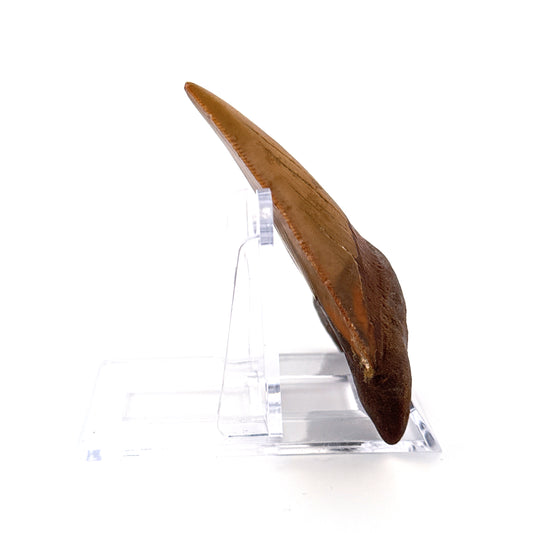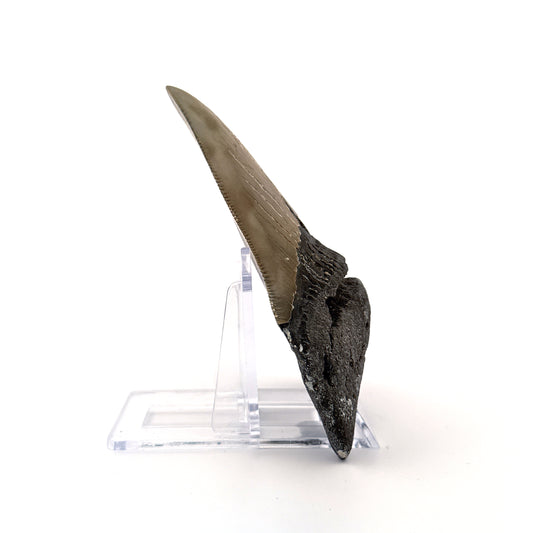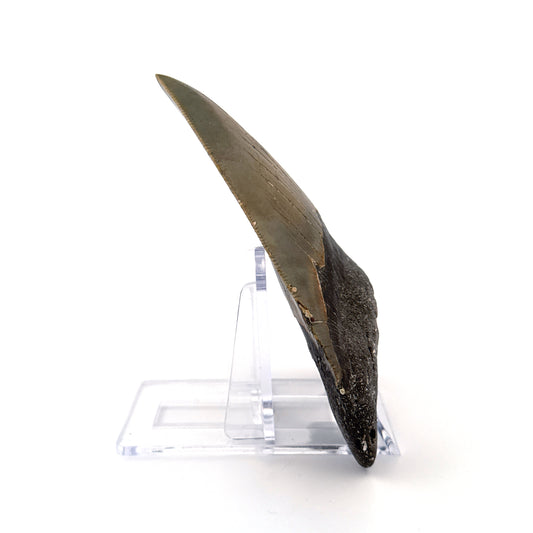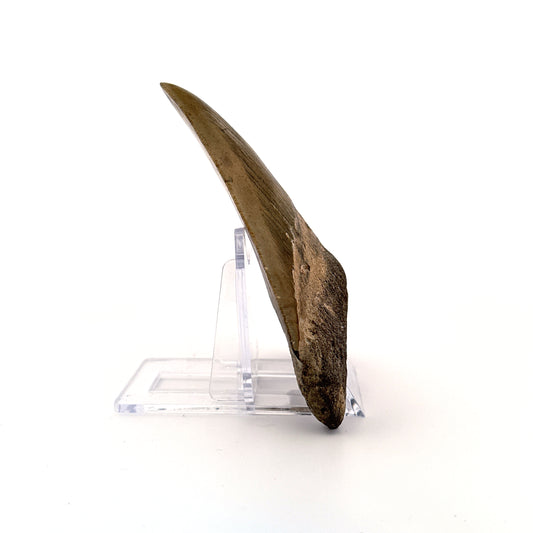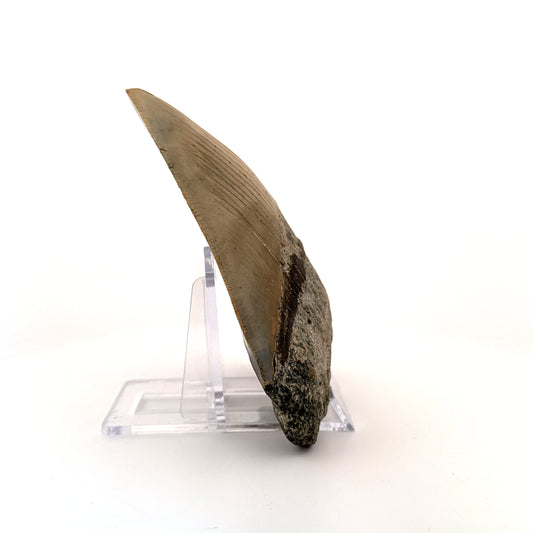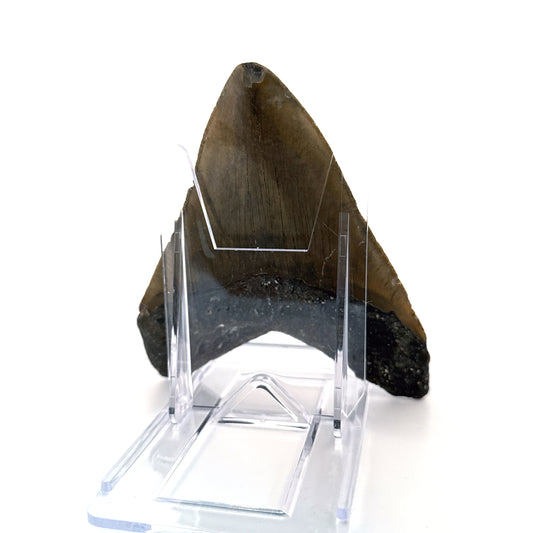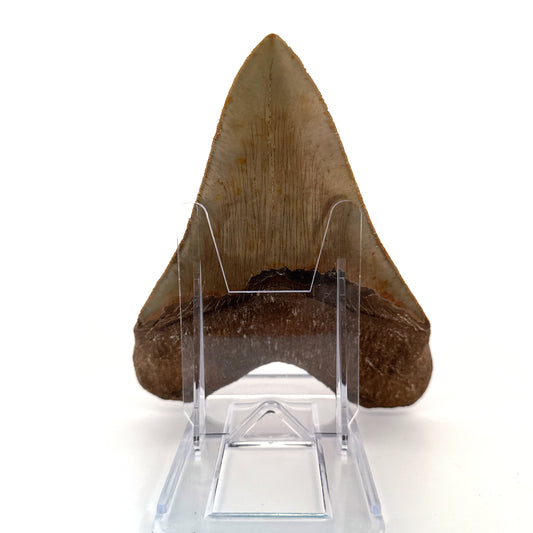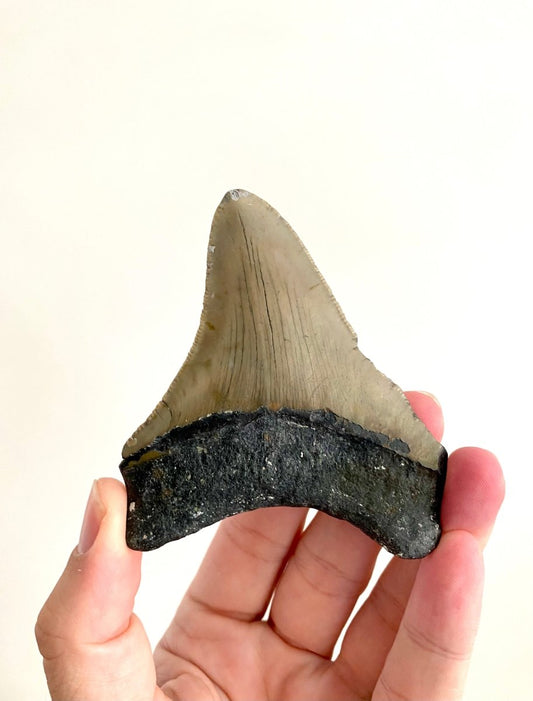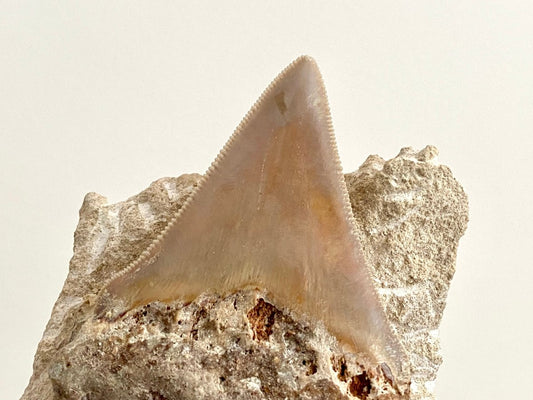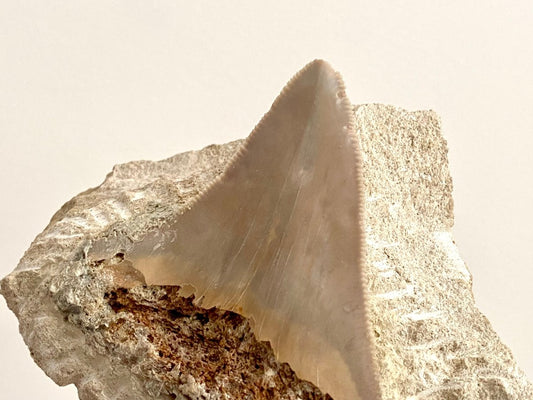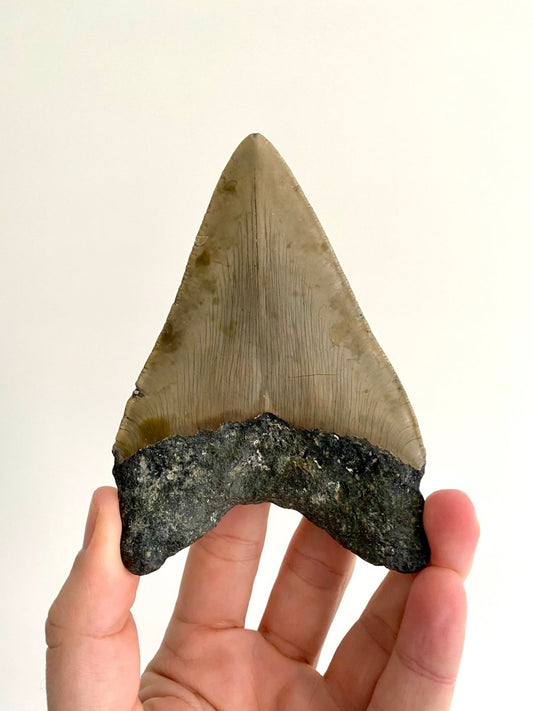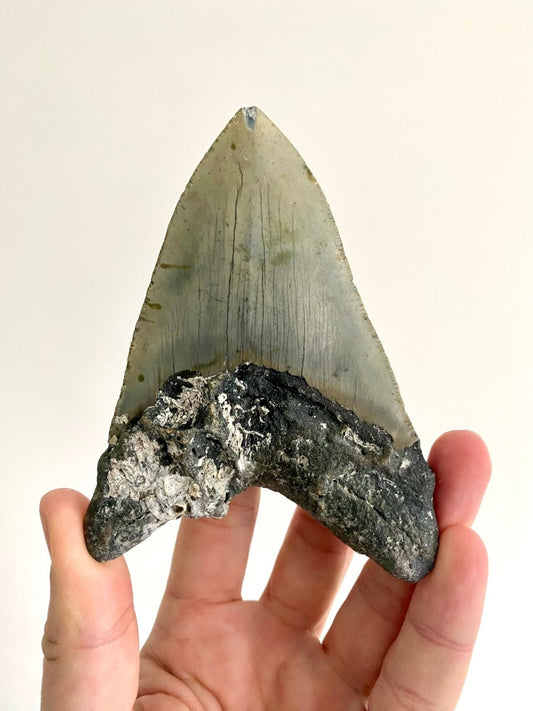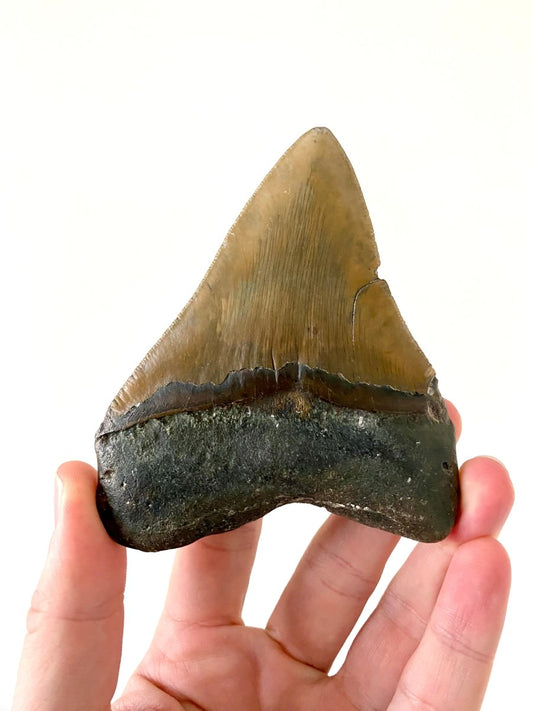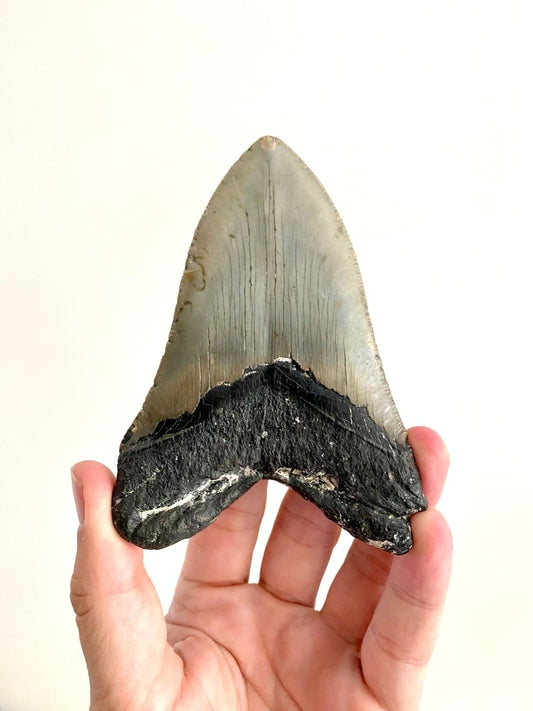Megalodon: The Prehistoric Super Predator
Otodus megalodon, commonly known as the megalodon, was arguably the most formidable predator ever to swim Earth's oceans. This massive shark species, which went extinct approximately 3.6 million years ago, captures our imagination as the largest known marine predator in vertebrate history.
Physical Characteristics
The megalodon dwarfed today's largest predatory shark, the great white. Scientists estimate that adult megalodons typically reached lengths of 15-18 meters (49-59 feet), with some specimens possibly growing even larger. Their massive jaws could open to about 2 meters wide, armed with serrated teeth reaching sizes up to 18 centimeters (7 inches) in length.
Key features included:
- Estimated weight: 70 tons or more
- Bite force: Estimated at 108,500-182,200 newtons
- Body shape: Similar to modern great white sharks but more robust
- Teeth: Triangular, serrated, and designed for seizing and breaking bones
Habitat and Distribution
Fossil evidence suggests megalodons were cosmopolitan, inhabiting most of the world's ancient oceans. They preferred warm, temperate waters and likely followed migration routes of their prey. Their remains have been found on every continent except Antarctica, indicating a global distribution in prehistoric seas.
Hunting and Diet
Megalodon was an apex predator with feeding habits that shaped marine ecosystems. Their diet primarily consisted of:
- Large whales
- Smaller whales and dolphins
- Seals and sea lions
- Large fish
- Other marine mammals
Using sophisticated hunting strategies, megalodons would attack the fins of large whales to immobilize them before delivering a fatal bite to the chest cavity. Bite marks found on fossil whale bones testify to these intense predator-prey interactions.
Evolution and Extinction
Megalodon evolved from smaller ancestors during the middle Miocene epoch, approximately 23 million years ago. Their extinction roughly 3.6 million years ago likely resulted from a combination of factors:
1. Global cooling and sea level changes
2. Decline in prey availability
3. Competition from newly evolved predators like killer whales
4. Loss of breeding grounds due to coastal habitat changes
Scientific Discovery and Research
Our understanding of megalodon comes primarily from fossil teeth, as their cartilaginous skeletons rarely fossilized. Key discoveries include:
- First scientific description in 1835 by Louis Agassiz
- Thousands of individual teeth found worldwide
- Rare vertebrae fossils providing size estimates
- Fossil whale bones showing bite marks
Cultural Impact
Megalodon has captured public imagination and influenced popular culture:
- Featured in numerous documentaries and films
- Popular subject in marine science education
- Frequently referenced in discussions about extinction and evolution
- Valuable specimens sought by fossil collectors worldwide
Megalodon fossil teeth
-
Megalodon tooth fossil (3.19") - Miocene, USA
Regular price €115,00 EURRegular priceUnit price / per -
Megalodon tooth fossil (4.28") - Miocene, USA
Regular price €165,00 EURRegular priceUnit price / per -
Megalodon tooth fossil (4.17") - Miocene, USA
Regular price €160,00 EURRegular priceUnit price / per -
Megalodon tooth fossil (4.10") - Miocene, USA
Regular price €155,00 EURRegular priceUnit price / per -
Megalodon tooth fossil (4.39") - Miocene, USA
Regular price €150,00 EURRegular priceUnit price / per -
Megalodon tooth fossil (4.63") - Miocene, USA
Regular price €180,00 EURRegular priceUnit price / per -
Megalodon tooth fossil (5.61") - Miocene, USA
Regular price €295,00 EURRegular priceUnit price / per -
Megalodon tooth fossil (3.70") - Miocene period, USA
Regular price €125,00 EURRegular priceUnit price / per -
Rare Megalodon tooth fossil from Italy on Matrix, Miocene period (2.91")
Regular price €120,00 EURRegular priceUnit price / per -
Rare Megalodon tooth fossil from Italy on Matrix, Miocene period (2.64")
Regular price €120,00 EURRegular priceUnit price / per -
4.80" Megalodon tooth fossil from USA
Regular price €180,00 EURRegular priceUnit price / per -
4.92" Megalodon tooth fossil from USA
Regular price €185,00 EURRegular priceUnit price / per -
4.85" Megalodon tooth fossil from USA
Regular price €175,00 EURRegular priceUnit price / per -
4.36" Megalodon tooth fossil from USA
Regular price €165,00 EURRegular priceUnit price / per -
Megalodon tooth fossil (4.61") - Miocene period, USA
Regular price €175,00 EURRegular priceUnit price / per


